German Army Alcoso-made Officer’s Dagger
CATEGORY: Version
SKU: 20.GOR.04.01.01.001.000
Estimated market value:
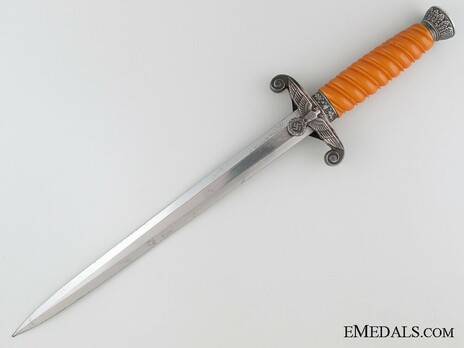
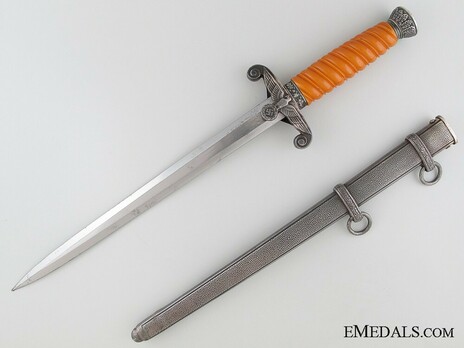
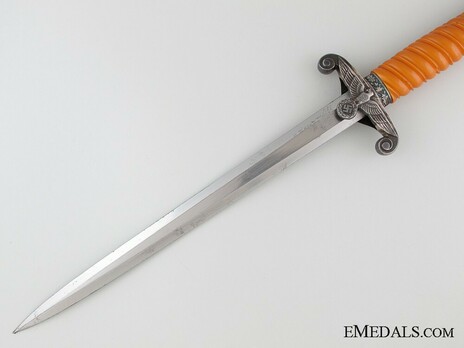
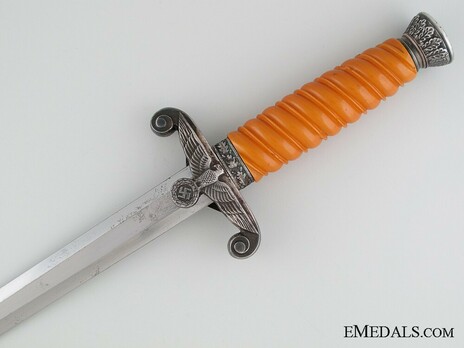
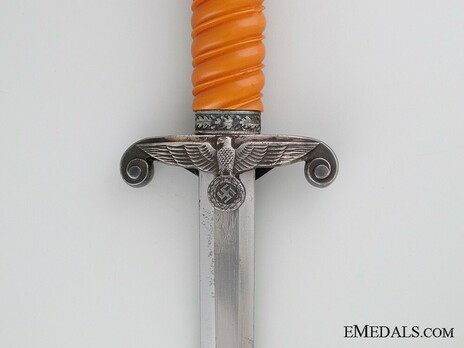
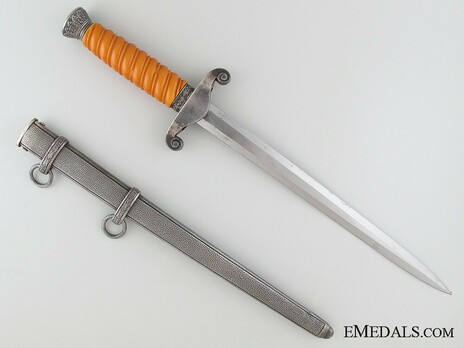
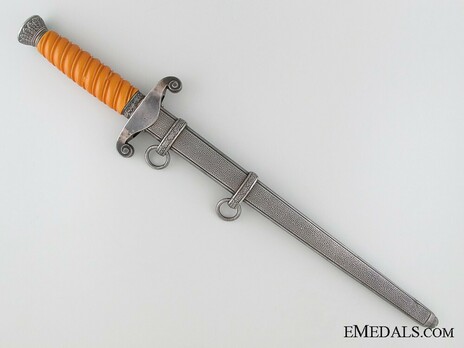
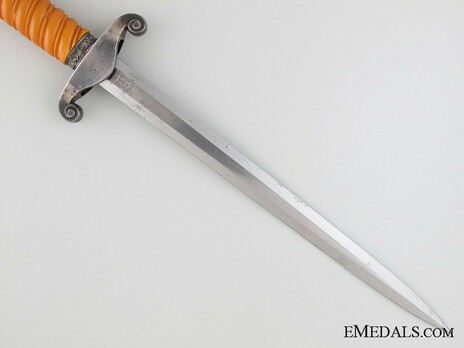
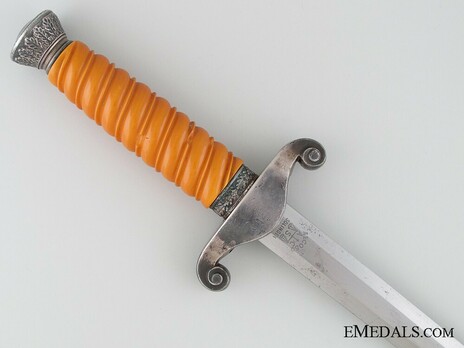
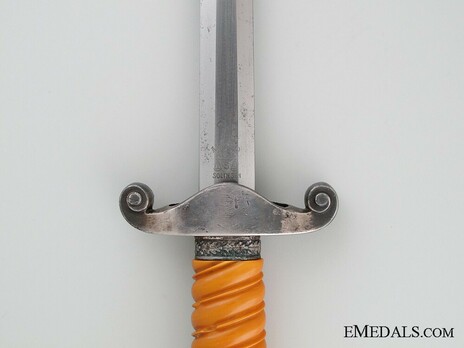
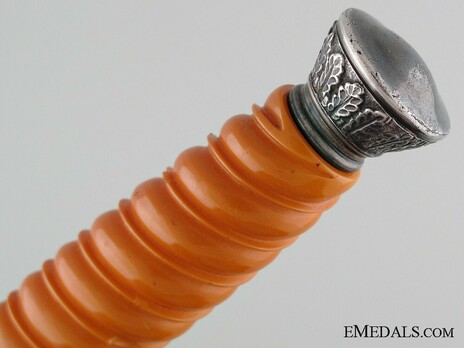
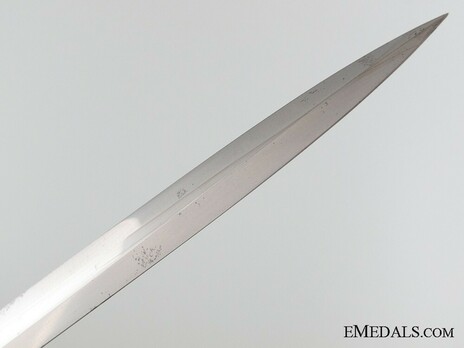
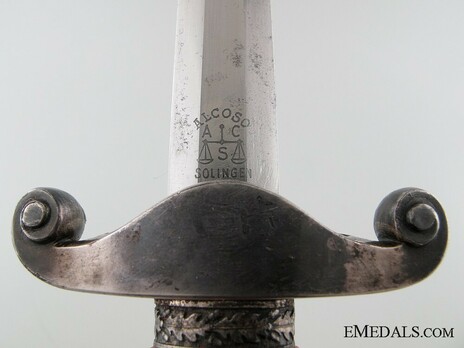
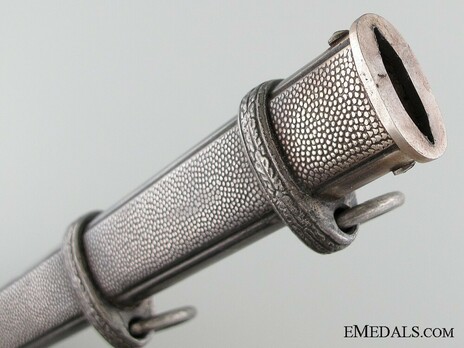
Estimated market value:
Army Dagger by Alexander Coppel GmbH (Alcoso) - Measuring 397 mm, with the scabbard on, this dagger features a 257 mm nickel-plated steel blade, with unsharpened edges, remaining bright and crisp, and having a very sharp tip. The blade's ricasso is maker marked Alexander Coppel GmbH (Alcoso), Solingen, with the company's balance of scales insignia. It retains its crossgraining, with faint scratches overall, common to extraction and return to the scabbard, and a natural shine, scattered light crazing in the nickel-plating, very fine. The thick black leather washer at the crossguard junction has two hairline cracks but remains intact. Crossguard with the Army eagle, a wreathed swastika clenched in its talons, oak leaf design on the band and pommel, light contact on the pommel's end, yellowish-orange celluolid grip features a series of ten parallel ridges, some of which exhibit chipping. All metal parts are magnetic, better than very fine. The scabbard is nice pebbled, magnetic, the bands exhibiting the traditional oak leaves design, dented on both sides just above the finial, dual screws holding the throat in place, rings have dagger hangers attached via clips, each clip marked "D.R.G.M."(Deutsches Reichsgebrauchsmuster), hangers with silver bullion uppers and olive green corduroy backers, scabbard 285 mm in length. Very fine.
The dagger for officers of the army was officially approved by Hitler and established on May 4, 1935. It could be worn by all officers in lieu of the bayonet or sword. This included all officers up to and including field marshals, as well as medical and veterinary officers, officials of equivalent ranks to officers, and selected NCOs.
The dagger with scabbard is about 40 cm long. The blade’s length is between 25 and 27 cm. Blades were often cross-grained polished. Rare examples are nickel-plated.
All metal fittings were silver plated in the beginning, but with the progression of the war the materials used were progressively cheaper and of lower quality, for example a natural aluminum finish.
The colour of the grip varies, ranging from white to dark orange. This is due to differences in materials and productions and was not used as a way to distinguish between ranks. It has a clockwise carved groove. Initially the grips were made of solid plastic, but around the time the war began this was changed to a plastic coating on a plaster filled and wooden base. Ivory or amber glass grip versions, among other materials, could have been ordered if the buyer was willing to pay the extra cost. Other custom-made versions included etched blades, damascus blades, and engraved crossguards.
Early cross guards and pommels were made of silver-plated brass. This later changed to nickel or an alloy with a silver or nickel plating. The cross guard shows a national eagle emblem, and the pommel a ring of oak leaves. The pommel is screwed onto the grip.
The scabbard was initially made of brass with a silver finish, but after 1936 this was changed to steel with a silver or nickel pebbled finish. Late daggers have a dull grey oxide finish. The scabbard has two hanger suspension rings with oak leaves.
The dagger was to be worn with a 42 cm silver portepee. Other colours, including gold have been observed, but they are very rare. It was worn on a double-strap hanger with white metal fittings, although general officer ranks were authorized to have gold-coloured metal fittings.
The wearing of the dagger was forbidden after September 5, 1944. The main reason for this was the fact that at this late stage of the war it was simply too dangerous for soldiers to wear a dagger instead of a gun at all times.

Comments
Sign in to comment and reply.


Scroll Top